- Home
- Patrick Robinson
Hunter Killer Page 16
Hunter Killer Read online
Page 16
There were even armored cars hidden quietly in various wadis and oases, all of them looking official, all of them occasionally visited by uniformed personnel from the armored brigades. Sometimes they were moved, sometimes left for another two or three days. But no one ever tampered with the well-paid Army in Saudi Arabia, and there were many officers and corporals already dedicated to the safety of the arsenal of the Crown Prince.
But now it was time to move. And the Prince and his advisers had each assumed, like the Saudi guards and quartermasters, that someone else had that under control. In fact, no one had it under control, even though it was the first question Colonel Gamoudi asked…where’s our base camp?…From where do we launch our attack?…Where’s our command headquarters?…Does it have communications?…If so let’s test them right away. You can’t have a decent revolution if you can’t talk to each other.
From the very beginning the Saudi rebels had been bemused by the forthright military opinions and questions gritted out by the ex–French Special Forces commander.
And the trouble was, he could not solve the problem. It was the Saudis who knew the territory, they who knew the available strongholds and houses. It was they who were supposed to be telling Jacques where to make his headquarters, not Jacques telling them.
And by late February it was growing tense. Hiding boxes of ammunition and even cases of light machine guns was one thing. Disguising a damn great Abrams combat tank in someone’s front yard, on the outskirts of Riyadh, prior to charging straight down the Jiddah Road with guns blazing on the morning of March 25…well, that was rather a different matter.
Colonel Gamoudi had marked up various possibilities—big houses with big gardens behind high walls. But he did not like any of them. It was always in his mind…One careless word from a servant, one sighting by an unsuspecting passerby, one friend of the family loyal to the Crown…that was all it would take.
He told the Prince of his concerns. He told him he needed a base where the public could not go. It had to be near a main highway, and it needed to be absolutely impenetrable by prowlers or sightseers. That meant it needed to be a place that could be cordoned off, for an obvious reason, a place that would cause no consternation among the public.
“Sir, do you have the power to select somewhere, and have the authorities deem it off limits until further notice? Somewhere we can start moving into, somewhere we can move the ordnance…somewhere from which we can attack?”
Prince Nasir pondered for two hours. He paced the room and sipped his coffee. He pored over the map of the city and its environs. And at 2:30 A.M. he stood up and smiled. “Yes,” he said. “I have it. I am, after all, head of the National Guard, and I have many serving officers loyal to me. The matawwa are also fiercely loyal to me. No one would think twice about it if we closed an historical site for restoration. I would not even need to tell anyone.”
Which was why, on Monday, March 15, there were eight M1A2 Abrams tanks parked bang in the middle of the ancient ruins of Dir’aiyah, and why the eighteenth-century mosque had a new roof, made of camouflage canvas to shelter the hundreds of tons of materiel hidden behind its great sandstone walls…. And of course why the ramparts of the old city were again manned by heavily armed guards, huddled behind high rock outposts, with searchlights front and center, all powered from the electric cable that once fed only the kiosk selling guidebooks, ice-creams, and cold drinks to tourists.
Ibrahim Pasha would have needed to think twice about an attack in the year 2010. Because any intruder caught unlawfully within a quarter-mile of Dir’aiyah was essentially history.
Col. Jacques Gamoudi had a grudging admiration for the thoroughness of Pasha’s attack, but he was grateful for the high section of the city wall left unharmed. He had a total of twenty-five armored vehicles parked beneath it, on the inside. And every hour, military vehicles arrived with more and more ordnance.
Le Chasseur, working in a specially built wooden office, logged and recorded every single delivery. The walls were pinned with maps. He knew the location of the principal palaces he must take. He knew where the radio station was. He was briefing his drivers and, above all, his tank commanders. There would be casualties, he was certain of that, and he was amazed at the volunteers who came forward to pilot the tanks he wanted driven directly into the principal palace.
It seemed that whatever he asked for was provided. The Moroccan-born Colonel knew in his own mind he was ready to take the capital of Saudi Arabia.
WEDNESDAY, MARCH 17, 0100
25.50N 56.55E, SPEED 12, DEPTH 50
Capt. Alain Roudy’s submarine was steaming into the Strait of Hormuz, the great hairpin-bend gateway to the oil empires of the Middle East. The Perle ran fifty feet below the surface, holding course three-one-five, slightly to the Iranian side of the seaway. Right now they were not trying to evade or avoid anyone’s radar or watchdogs.
They were leaving a very slight wake on the surface, but one that would have been discernible only to an expert. This did not include tanker captains or their afterguards, and there were no patrol boats in radar sight, either from the Iranian or Omani Navy.
There was a massive LPG tanker making ten knots, way up in front, and twenty minutes ago they had passed a 350,000-ton Liberian-registered VLCC heading south about four miles off their port beam. Alain Roudy knew the seaway would probably grow busier as they headed into the mainstream north-south tanker routes inside the Gulf, but for the moment, the Perle ran smoothly underwater in thirty fathoms, oblivious to wind, waves, and tide.
They would begin their turn to the left two hundred miles hence, to the northeast, west of Ras Qabr al Hindi, the jutting headland of the Musandam Peninsula, the northernmost point of the Arab sultanate of Oman, and a closed military zone. Captain Roudy would probably encounter Navy patrols off there, and he would accordingly slow right down, wiping that faint but telltale wake clean off the surface.
From there the submarine would head west, steering course two-six-one, slowly, only seven knots, directly toward the Saudi oil fields. It was a 520-mile run, 170 miles a day, which would put them comfortably in their ops area in the late afternoon of Sunday, March 21—just west of the Abu Sa’afah oil field, that is, and five miles east of the world’s busiest tanker route, the one that led down to Saudi Arabia’s Sea Island Terminal.
On board the Perle were sixteen men from Commander Hubert’s D’Action Sous Marine Commando (CASM)—underwater action commando. This was the French Navy’s combat diver capability, and they were very good, right up there with the U.S. Navy SEALs and Britain’s SBS. Twelve of these frogmen, the swimmers who would hit the oil platforms, came directly from CASM, Section B, Maritime Counterterrorism, which was a bit rich under the prevailing circumstances. The other four, expert boat drivers and communications personnel, had been seconded to the mission from Commander Hubert’s specialist Second Company. They were the four best men in the critical fields of placing the Zodiacs inch-perfect in the right place, and staying in communication with the swimmers and the mother ship.
The hit men had been very within themselves on the journey out—quiet, thoughtful, and rarely seeking conversation with the crew. But everyone understood. These sixteen men represented the frontline muscle of the mission. Should they fail, or be hit by gunfire and wounded, or even killed, the result would be an absolute catastrophe for the Republic of France.
Everyone appreciated what these swimmers were scheduled to accomplish and also the dangers they faced. Of course most of the crew knew the precise identity of the target.
But submariners were apt to be extremely bright, and there was no one aboard the Perle who did not understand that the men from CASM were most definitely going to hit something hard. That was the critical path of the mission, the sharp end. Black ops men, in all the Special Forces in all the major Navies, were allergic to failure.
Commander Jules Ventura, a thirty-two-year-old bear of a man—swarthy, taciturn, half-Algerian, from Provence—would lead the div
ers to the probably more dangerous offshore LPG Terminal at Ras al-Ju’aymah. The submariners who served with Ventura and talked to him were already treating him like a god. Which was the one thing that actually made Big Jules smile.
THURSDAY, MARCH 18, 1630
25.40N 35.54E, COURSE ONE-FOUR-ZERO, SPEED 7, DEPTH 400
The Améthyste crept slowly through the warm waters of the Red Sea, 340 miles south southeast now from Port Said. There were almost 600 fathoms below her keel, and her new nuclear reactor was running sweetly. She made no sound in the water, and the biggest excitement so far on this journey was when they passed, briefly at PD, within five miles of the flashing light on the jagged El Akhawein Rock jutting up from the seabed at latitude 26.19.
Thirty-five miles ahead of them was their next marker, another craggy rock, Abu el Kizan, suddenly scything up from the seabed on the desolate sand-swept Egyptian side. They would pass within twenty miles, too far to see its light, even if they came to PD, 120 miles from the ops area.
They were in good time for the night of March 21, when they would blast the massive Red Sea oil terminal at Yanbu al-Bahr clean out of existence, a few minutes after their commanding officer, Louis Dreyfus, had fired a volley of cruise missiles straight at the Yanbu, Rabigh, and Jiddah refineries.
Generally speaking, the Améthyste was a more cheerful ship than the Perle. But her mission was infinitely less dangerous, since she was operating in deep open waters, in a lonely sea—at least, in terms of warships—against a country that had a weak Navy and was inexpert in the use of submarines.
Améthyste was the biggest fish in the tank, so long as there were no U.S. Navy submarines passing through. Thus she had no enemies as she crept through these international waters. And if Commander Dreyfus and his helmsmen held their nerve, they would never have any enemies, because no one would even see her for the next four or five weeks. And when they did—thousands of miles south in the hot western waters of the Indian Ocean—there would be no reason on earth to suspect that she had anything whatsoever to do with the night of stupendous combustion that destroyed Saudi Arabia’s oil industry. That was surely, just “an Arab thing.”
Commander Dreyfus and his senior officers understood this extremely well. That knife-edge element of real danger, always present in the Perle as she picked her way through the Gulf of Iran, was missing from the Améthyste.
THE TANKER ROUTE LEADING TO THE GREAT SAUDI ARABIAN OIL TERMINALS
Which was why the Améthyste was a very cheerful ship. And why the dark, lean, and droll commander of the frogmen, Garth Dupont, aged thirty-one, spent many hours playing bridge with his colleagues and the crew, though for stakes about twenty-six thousand times lower than those wagered by the late, great playboy Prince Khalid bin Mohammed al-Saud in the lush environs of Monte Carlo.
In fact the entire sum of the cash wagered by Garth Dupont and his pals on the 3,000-mile voyage from Brest added up to one–one thousandth of the money blown in a half hour in Monte Carlo by the late Prince Khalid, and HRH Princess Adele (deceased), late of south London.
THE NORTHERN END OF THE RED SEA
CHAPTER FIVE
SUNDAY, MARCH 21, 0030 (LOCAL)
NORTHERN PERIMETER, KING KHALID AIR BASE
General Rashood, Major Marot, and their two senior French explosives experts were lying flat among the dust, bracken, and rocks, beyond the high-wire fence that guarded the air base from attack from the rear. They were watching, for the umpteenth time, the guard change in the base. It took place at this time every night, at which point a Saudi Air Force jeep drove half a dozen men right around the perimeter. They always drove fast, always drove with the jeep’s main beams raised, they were always noisy, and their lights cast a useful illumination on the aircraft parked out here on the north side of the airfield.
General Rashood and his command team had spent many weeks studying the field from satellite photographs, and however many training flights took off and landed at King Khalid, there always seemed to be the same number of fighter-bombers on this station—forty U.S.-built F-15s, and thirty-two British Tornadoes.
The U.S. aircraft were arranged in five rows of eight, the British jets in four rows. Very occasionally wide hangar doors, two hundred yards away, were opened, and it was possible to see three more fighter aircraft in there. It may have been a service rotation, or just running repairs to active aircraft. General Rashood could never quite tell whether the aircraft were the same ones or not, because he saw them only every three days, and his view was head on to the identification numbers.
The attack was to begin four days from now, on Thursday, March 25th. And tonight’s final recce was critical, to make certain none of the airfield routines were broken. The guard changed at the regular time, the aircrew in the brightly lit hangars and workshops stopped work at 1800, and the base was more or less asleep soon after midnight.
On Thursday night, the twelve top demolition men in Maj. Paul Spanier’s Team One, operating in pairs, were going in there. Their task was to work their way down the lines of F-15s. Simultaneously, Maj. Henri Gilbert’s Team Two demolition experts would be in among the Tornadoes, prior to the opening frontal attack on the two hangars, one of which they had never seen opened.
General Rashood had his own idea of sequence, which was for bombs to be set on the engines of the standing aircraft, with timers set for detonation at 0100 Friday. That was seventy-two explosions, which, given the jet fuel onboard, ought to create a blast similar to Hiroshima.
He was allowing a generous fifteen minutes per aircraft, which meant that each team had one hour and thirty minutes to set the explosives on six of them. In addition, Rashood allowed four minutes more on each aircraft for the teams to remove wrenches, screwdrivers, pliers, and bits of cut and spliced det-cord. That was almost two hours per team to take care of the fighter-bombers. Thus the frontal hit on the hangar doors would take place at 0100.
Tonight’s first tasks were principally about time, checking that from the guard change at 0030 it would take exactly fourteen minutes for the jeep to speed out past the only spot among the parked aircraft where intruders could be seen.
Busy demolition men tend to get preoccupied, but on Thursday night each man would have a tiny beeping alarm on his watch that would sound at 0042, the signal for everyone to hit the deck, lying flat in the dark until the Saudi Air Force’s final patrol was past and on its way back to the barracks.
Ten minutes earlier, the first moment that jeep had driven by the hangars, General Rashood’s two det-cord men would be at the great sliding doors and winding the high explosive around the locks. When the aircraft blew, the doors would blow too, and the spare men from Teams One and Two would be in there with bombs set for five minutes.
As the staff of the airfield charged out to witness the total demolition of the seventy-two aircraft on the field, they would see the hangar go up in a fireball. And then the fuel dump, which was situated on the eastern edge of the airfield and would probably provide the biggest explosion of all.
In the meantime, the al-Qaeda fighters who were scheduled to open up a diversionary fight at the gates at 0050, thus occupying many of the guards, would now be assisted by the spare men who had blown the hangars.
Their orders were to move fast through the airport buildings and return to the main gates with hand grenades to blast both guard rooms, thus trapping the Saudi defenders front and rear. At 0055, the al-Qaeda men were to fight their way inside the base, carrying two heavy machine guns, and to open fire on the accommodation block and communications rooms without drawing breath.
That, reasoned General Rashood, would effectively be the end of Saudi resistance: almost every aircraft on the base blown to pieces, the hangars destroyed, most of the guards dead or burned, buildings on fire. What was there left to defend? If it wasn’t the end of Saudi resistance, something had gone drastically wrong.
Right now he was certain they had thought of everything. The charts of the airfield back in Taverny h
ad been completely accurate, the scale model they had studied had been perfect. The surveillance photographs had been remarkably helpful, and the detailed plans of both the F-15s and the Tornado fighter jets, provided by Saudi sympathizers inside the base, were a priceless guide to the demolition men.
Nonetheless, General Rashood was still lying in the dirt outside the wire on the northern perimeter of the airfield. He felt that he knew the place better than his own home back in Damascus.
Through his binoculars he watched the jeep with the new guard detail drive from the guardhouse to the gates. It picked up the men coming off duty and drove them back to the accommodation block. Six more guards then boarded the jeep, and it swung around and headed out onto the airfield. It always drove down the main runway and then picked up the narrow perimeter road and made a circuit of the whole air station.
Tonight the General was making a final decision as to where to station two of his men lying flat, machine guns ready, just in case it was necessary to eliminate the six guards in the jeep. For a few days he had considered that the best spot might be in the bracken, right inside the fence. But upon reflection, watching the angle of the jeep’s lights night after night, he decided that there was perhaps a one in ten chance the beams might pick up movement in the grass. And then they’d have an uproar on their hands before the aircraft demolition team had completed its work. The Saudis might even have time to communicate and turn on the airport floodlight system, maybe even send for help from the military base, which would have helicopter gunships down there in about ten minutes.

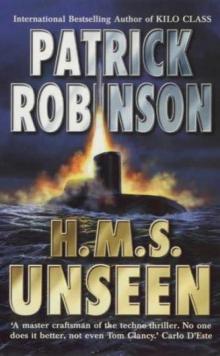 H.M.S. Unseen am-3
H.M.S. Unseen am-3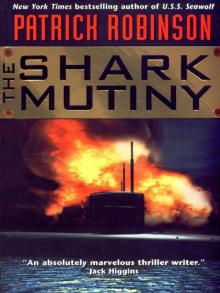 The Shark Mutiny (2001)
The Shark Mutiny (2001)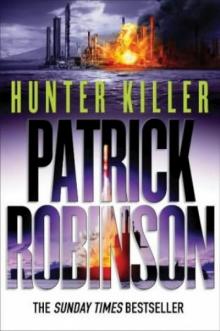 Hunter Killer am-8
Hunter Killer am-8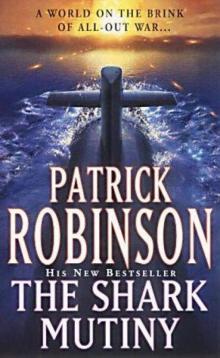 The Shark Mutiny am-5
The Shark Mutiny am-5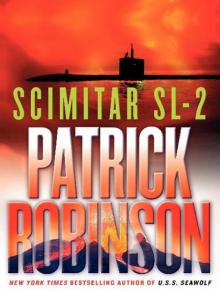 Scimitar SL-2
Scimitar SL-2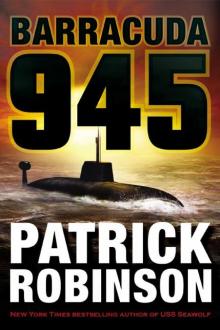 Barracuda 945 am-6
Barracuda 945 am-6 Hunter Killer
Hunter Killer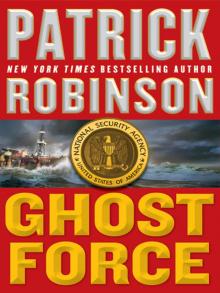 Ghost Force
Ghost Force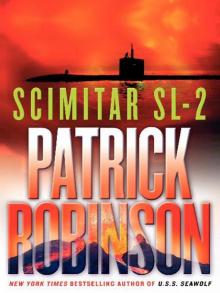 Scimitar SL-2 (2004)
Scimitar SL-2 (2004) Kilo Class am-2
Kilo Class am-2 The Lion of Sabray
The Lion of Sabray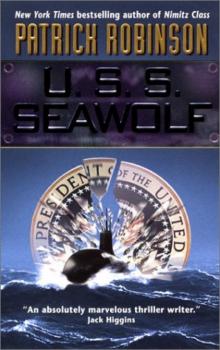 U.S.S. Seawolf am-4
U.S.S. Seawolf am-4 Ghost Force am-9
Ghost Force am-9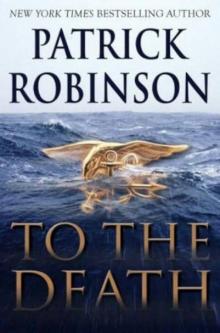 To the Death am-10
To the Death am-10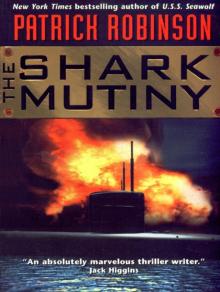 The Shark Mutiny
The Shark Mutiny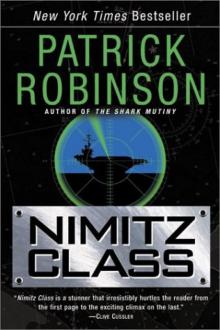 Nimitz Class am-1
Nimitz Class am-1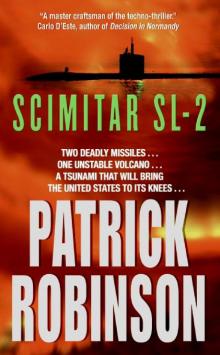 Scimitar SL-2 am-7
Scimitar SL-2 am-7 Barracuda 945
Barracuda 945 Intercept
Intercept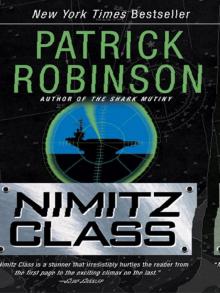 Nimitz Class (1997)
Nimitz Class (1997)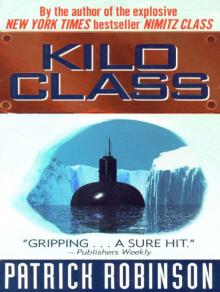 Kilo Class
Kilo Class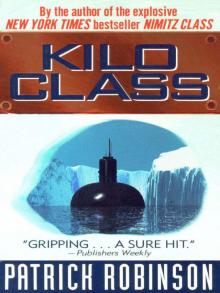 Kilo Class (1998)
Kilo Class (1998) Diamondhead
Diamondhead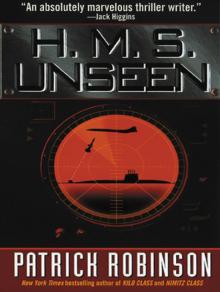 H.M.S. Unseen
H.M.S. Unseen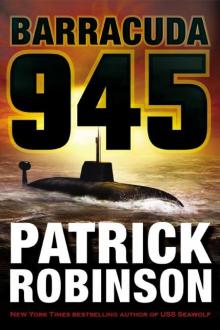 Barracuda 945 (2003)
Barracuda 945 (2003)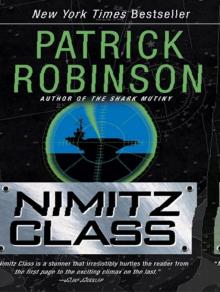 Nimitz Class
Nimitz Class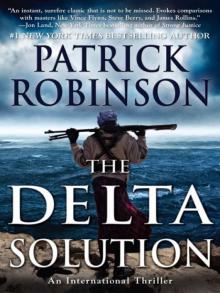 The Delta Solution
The Delta Solution U.S.S. Seawolf
U.S.S. Seawolf